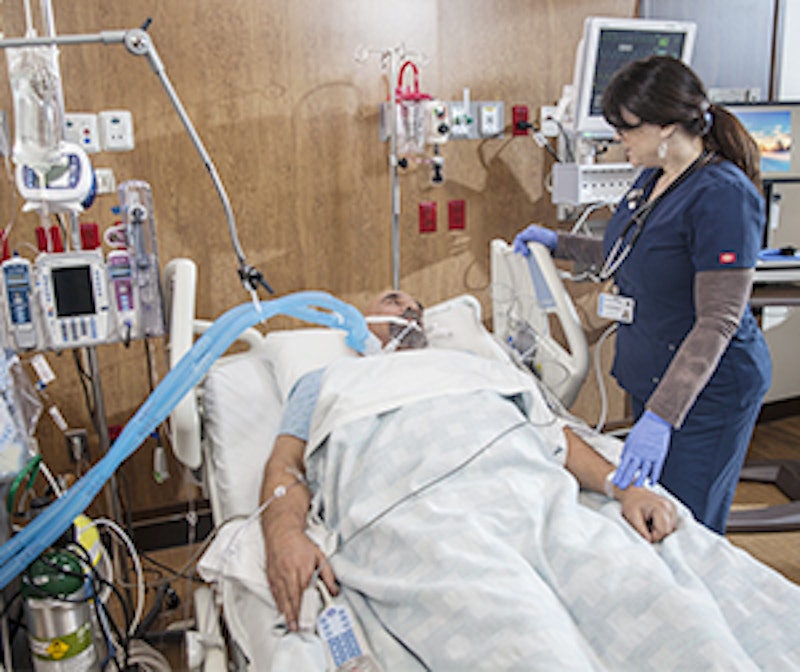There were details I wasn’t supposed to remember, shouldn’t have been able to remember, because of the Versed bolus they’d injected. It’s supposed to cause retrograde amnesia, so the patient wouldn’t remember anything, even the bolus. But how sure can doctors be when every patient’s chemistry is a variable? My brain had constructed a workaround, and I remembered plenty.
I remember how hard it was for them to extract the breathing tube. It was as if I’d swallowed a baseball bat. My throat had collapsed around the tube, resisting its removal. They were tugging at it, like a stubborn tree root. Then it wasn’t there, and I could feel the empty core where it had been. I could bend a little, I could move. My chest became free and air entered. I think my wife was with me.
I remember a thin blue wire sticking out of my chest, and then pulling it out. Pliers were involved. It had a tiny corkscrew thread at the end. A bit of pink tissue stuck on the thread. If I’d needed a jumpstart, they told me later, that would’ve been the wire.
As the narcotics wore off, the pain became clear, dead center in my chest. Neither hot nor cold, just a kind of pressure. The pain was behind the scar, six inches of football stitching, turning black and crusty as it scabbed over. So they had cut me open. That’s what the “open” in open-heart surgery means. A coughing fit caused tiny blue metal stars to appear; a nurse showed me how to bundle up towels and clamp them to my chest, so as not to blow the stitches out. Not the chest stitches, but the ones holding the new aorta in place. It was made of Dacron and came with a shiny new metal valve attached.
The surgeon had pulled the halves of my sternum back together with stainless steel piano wire. No morphine, at least not right away. They’d explain why later. There were two little tubes sticking out of me, right below my bottom ribs. Drainage tubes for my chest cavity, offloading excess fluid. They were leaking blood now but it didn’t scare me. Once you’ve opted for surgery, you surrender control. You have to trust. Someone came in, maybe a resident, and installed a few stitches around the base of the tubes. The bleeding subsided. In the best hospitals, you can love everybody. Especially in the two or three seconds between the Propofol injection and unconsciousness. What a nice drug. I liked the resident. I liked them all. The nurses, the technicians, the interns. They represented mysterious knowledge. They made me want to know things.
There was a bed on the other side of the curtain. I could hear the machines, the labored, assisted breathing. Comfort-inducing beeps and flowing gas. Rubber wheels on polished linoleum. Voices. It was too early for me to imagine what they’d done to the guy on the other side. Later: This man was 20 years my senior and needed a coronary bypass before they could replace his valve. He was on the operating table for nine hours. He wasn’t on any opioids. No need. The nurse said some old people were funny that way. “They’re just good at it for some reason,” she said. “It’s not even pain management.” She speculated that perhaps their sensory apparatus becomes less sensitive over time. You'd think the elderly had been consulted by God during the design process. The man had gotten a pig valve and wasn't concerned about how long it might last. I didn’t dwell on this. I was still pondering the agony in my chest bone. For some reason it seemed critical that somebody come and wash my hands.
Friends came. It’s what people call support. Maybe they know they can’t help, can’t understand. But they wanted me to know they were feeling something, and that it was about me. I think it was Kant who said that the only truly good thing is good intent. That has become a big idea for me. Having good intent. But the visits didn’t mean much. The pain was intense and private. Afterwards, when I understood what the surgeon had actually done, my survival seemed miraculous in an unshareable way. For a while I wondered if they’d merely cut the skin and closed it back up, without doing anything inside. Then I wondered how it would feel if it had been my spine instead of my heart.
To repair the aorta, they have to cut the sternum down the middle, spread the halves apart with a retractor, disconnect the coronary arteries from the ascending aorta. Then they cut away the bad stuff, stitch in a section of Dacron, and reattach the coronaries. In my case there was a St. Jude aortic valve attached to the Dacron, because my birth valve was faulty. The day before they did this, they sent me to the cardiac cauterization lab, to make sure my coronaries were in good enough shape for surgery. The images from that angiography changed my life. I asked the x-ray tech how much schooling would be required to have her job. “Two years,” she said.
It took a few weeks for the swelling to go down, for the internal drama to heal over. Then one day, as I was sitting on the can, I heard this sharp clean tiny metallic click, like the slow drip of a leaky faucet. The sink was fine. The click was the unsettling but somehow satisfying closing of the new valve’s doors.
After I healed up, I returned to college to study cardiology. I was 50 years old.

